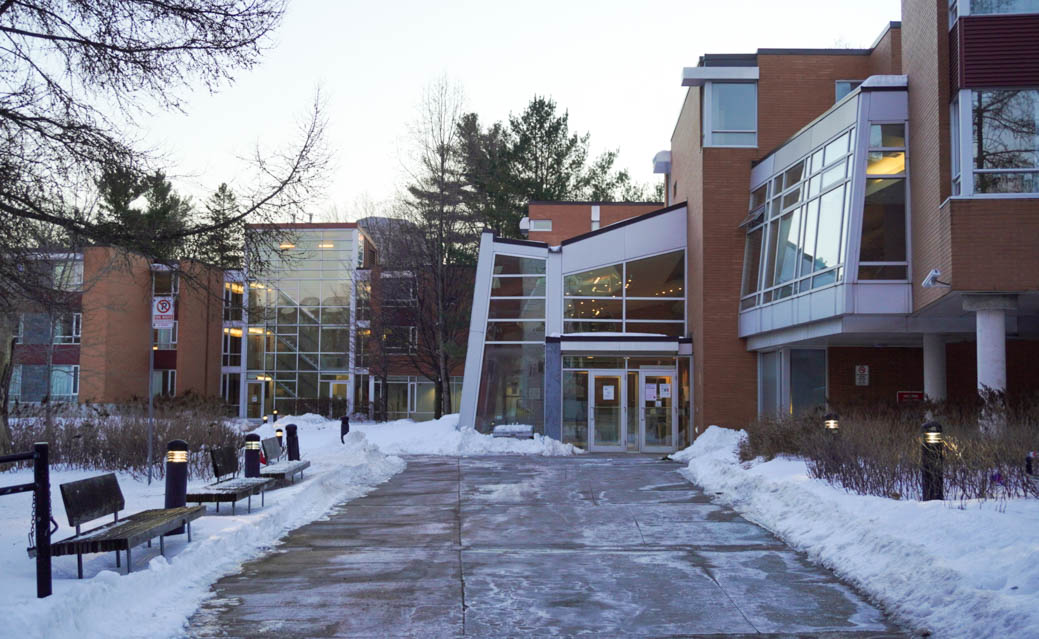A home away from home: The international student residence experience
Residence is a bubble that protects international students from the real-world consequences of living off-campus.
When I first landed in Canada as an international student, I was overwhelmed with fear and excitement. I was beginning a new part of my life independently, but I was also terrified because I didn’t know anybody. On move-in day, my father and I pulled into the University of Toronto Mississauga (UTM) and saw “Welcome Home!” banners flying high around campus. A parade of students wearing Student Housing Residence Life (SHRL) shirts danced and cheered as every new student entered campus to move into their place of living for the next year. I couldn’t help but smile. The warm and joyous welcome gave the impression that my upcoming year at UTM living in residence would be happy and exciting. This welcome is a big reason why I chose to stay in residence for all four years of my undergraduate life and worked for two years as part of the SHRL team.
Coming from Singapore, I was a stranger to Canada and everything it had to offer. The subtle differences in which side of the pavement to walk on, what clothes to wear, and what words to use to express the same ideas pondered in my mind. I was constantly aware of how different things were, and how I had to navigate this unknown space all by myself. As an introvert, orientation events such as games intimidated me. A lot of the icebreakers were unfamiliar. Within my orientation group, I could see that a lot of people were already friends—making me feel even more isolated and alone. I didn’t notice I was doing this, but I always drifted and stuck to one person in all those activities—the girl who lived across the hall from me in Oscar Peterson Hall. The community, the constant interactions in the hallways and dining halls, living and eating together, formed the foundation of my closest friend group in UTM, and it truly started to feel like a home. And this feeling is one that a lot of international students share.
The bubble of residence
As the number of international students increase over the years, so does the demand for safe and convenient housing within university campuses. Even now, amidst the Covid-19 pandemic, international student applications and approvals are on the rise. On-campus residence is instantly appealing for those who are unfamiliar with the Canadian housing system and lifestyle. Having the convenience of guaranteed resources like food, water, and electricity, as well as the safety of campus and the sense of comfort and community, draws many students in.
Hosting more than 1,500 spaces, five small neighbourhoods of townhouses, and three buildings of apartment-style housing, the SHRL is a thriving community at UTM. First year students typically live in Oscar Peterson Hall, Erindale Hall, Roy Ivor Hall, and McLuhan Court. On the other hand, upper years stay in Putnam Place, Leacock Lane, Magrath Valley, and Schreiberwood.
All students living in residence are divided up into smaller communities, each led by a Don. Dons lead weekly or bi-weekly community gatherings that follow a curriculum set out by SHRL. This curriculum focuses on providing tips, tools, and understanding of transitioning to a new country, as well as making meaningful connections with people, understanding diversity and differences, and well-being.
Salma Abdalla is a former Don at SHRL and a fourth-year Psychology specialist and Education Studies minor. As a Don, one of her most rewarding yet challenging tasks was “being responsible for initiating, fostering, and maintaining one-on-one and group relationships with and among individuals that could be complete strangers to one another and yourself,” she says. Abdalla lived in residence for the first two-and-a-half years of her undergrad before she moved back to Saudi Arabia due to the pandemic. Since the members of her residence community and fellow Dons were of similar age, she formed meaningful connections on shared interests much easier.
There are other ways that international students can familiarize themselves with the UTM community. Incoming first years can enrol in residence groups like Living Learning Communities, where students that share similar interests and courses can live together and participate in activities focused around those interests. Students can network with professors to ease their transition and receive helpful tips from professionals. First years can also apply for a Peer Academic Leader (PAL). A PAL is an upper year student that helps newer students transition into their programs by offering guidance on how to study—they provide tools for academic success.
The transition to off-campus living
However, considering that living spaces are limited for upper years in residence, and that international students don’t have priority in residence applications, they eventually must look for off-campus housing. This is a daunting process because most international students are unaware of Canadian housing practices.
After living on residence for three years and facing two Islamophobic incidents while performing her Don duties, Abdalla looked for off-campus housing. “My decision to leave residence was also informed by my yearning to begin my post-graduation life,” she explains. “I thought, why not initiate the transition of living off-campus early instead of scrambling for housing at the end of my fourth year?”
Her search for off-campus housing happened virtually from her home in Saudi Arabia. She wondered which websites were reliable, which locations were safe and close to campus, and how much typical rental prices were. “What are utilities? Which utilities are necessary and should be included in rent? What is a credit score and why do I need it to rent a place? What is the Ontario Standard Lease? And most importantly, what are my rights as a tenant?” she adds.
Residence is a bubble; it protects international students from thinking about these issues and provides all these facilities within residence. But when it’s time to burst out of that bubble, international students are overwhelmed with information.
The UTM SHRL website offers some assistance in beginning the searching process. They provide links to search for houses, a breakdown of how much rent and facilities might cost, advice on how to avoid scams, and what rights tenants have. Although these resources are helpful, they only cover the initial stages of the house search. Roommate selection, reliability of a landlord, location of housing, safety of the area, access to public transport, payment methods, and lease agreements are steps students must figure out themselves without much aid.
As a female student who wears a hijab, Abdalla looked for three types of safety in her off-campus housing: physical, psychological, and financial. Physical safety includes freedom to practice her religion safely, study, and work peacefully inside and around her house. Psychological safety means having good relationships with her roommates, neighbours, and landlords. Financial safety means being able to afford the rent and facilities.
Luckily, Facebook pages and a few other websites allow U of T students to make posts in search of roommates. After narrowing down to people that are somewhat reliable, there comes another set of challenges: coordinating a time to discuss personal requirements, meeting with the landlord virtually to commit, and accommodating for all time zones as well.
As Abdalla searched for off-campus housing, she faced those struggles, but perhaps her most challenging one was making a rental agreement when her source of financial support was outside of Canada. This meant a whole set of new paperwork and documentation was needed, which wasn’t explained in much detail to a novice house-hunter like her on SHRL and outside resources. “[This information] should be integrated in lesson plans in residence from the very beginning to prevent overwhelm and confusion when it’s time to look for housing,” concludes Abdalla. She advises anyone living off campus to “start early, ask questions, and know what you want.”
For me, it wasn’t the furniture, the layout of the house, or the utilities in the common areas that made the UTM residence a home. It was the community I was a part of; the day-to-day interactions in hallways, bumping into each other in the dining halls; planning sleepovers and movie nights; and chatting with neighbours at 12 a.m. in the parking lot. Residence is a place where strangers live together but form life-long bonds and relationships. I have been happy to be a part of the residence bubble for all these years, but not everyone is able to do so.
Opinion Editor (Volume 48) | opinion@themedium.ca —
Aroni is a fourth-year student completing a double major in Political Science and English. She previously served as the Associate Comment Editor for Volume 47. Aroni is keen on enabling a safe and trusted space within the student body for students to critically think about issues that matter to them—both on a personal to global scale. Outside of studying, writing, and editing, she loves to dance to classic Bollywood tunes, cycle while listening to music or a podcast, write in her blog, and watch endless K-dramas on Netflix and Viu. You can connect with her on Instagram, LinkedIn, or her blog.


